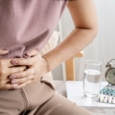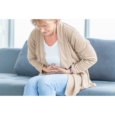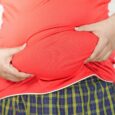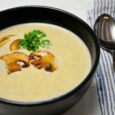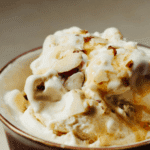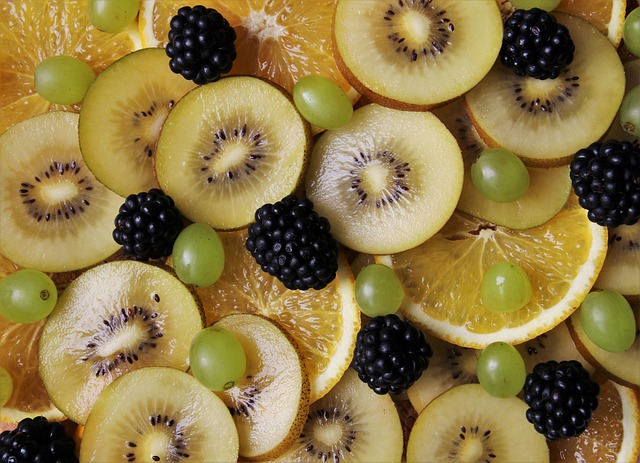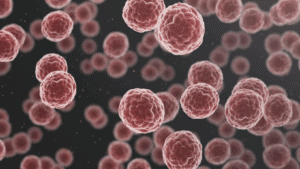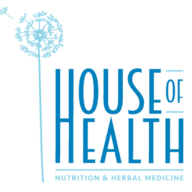Candida is a yeast, that is normally present in the digestive tract and the vagina. During certain favorable conditions, such as warm, humid weather or when an individual’s immune system is impaired, the yeast can infect the skin, or mucous membranes in the mouth and vagina. This is called candidiasis. In rare instances, Candida can invade blood and deeper tissues, causing a life-threatening infection.
It is fairly common that people develop a candida infection after taking antibiotics (1)
The antibiotics kill the unwanted bacteria as well as those that normally keep the gut healthy and candida under control. This allows the candida to proliferate. Pregnant women,, their babies, diabetics, and those who are overweight are also prone to developing a candida infection. Corticosteroids (such has hydrocortison or prednisone) can also promote its growth.
COMMONLY INFECTED AREAS:
- Skin folds, such as under breasts, underarma and around the anus. Symptoms include a red itchy rash with patchy areas that seem to be always damp
- Vagina (vulvovaginitis), occurs most often in pregnant women, those taking antibiotics, or those with diabetes. Symptoms include a white or yellow discharge, with burning, itching, and redness on the walls and the external areas of the vagina
- Penis – occurring mostly in men with diabetes or whose sexual partner has a vaginal candida infection. A red, scaly, often painful rash appears on the underside of the penis. However, a fungal infection of the penis (or vagina) will not always symptoms.
- Mouth (thrush), (caused by a candida infection in the mouth) where creamy white patches will appear on the tongue or sides of the mouth. Antibiotics can also cause thrush
- Nails (paronychia), caused by a candida infection in the nail bed – this causes a painful swelling and secretion of pus from the nail beds. Infected nails may turn white or yellow and separate from the surrounding skin.
CANDIDIASIS AND THE YEAST SYNDROME
Diagnosis of candidiasis is generally made according to the symptoms. If there is doubt, a swab or scraping can be sent to the lab to verify it.
A “yeast syndrome” or “candidiasis” refer to a condition in which the predominant features are fatigue, a generalized malaise, gastrointestinal complaints, recurrent chronic infections, allergies, skin problems, decreased concentration, depression, irritability, and craving for sweets or carbohydrates. (2)
The underlying cause is an overabundance of candida (sometimes referred to as yeast) in the bowel and perhaps elsewhere – this often appears connected with heavy or repeated use of antibiotics.
While some patients do get better when they follow a diet essentially devoid of sugar, yeast-containing substances, and wheat., not all need to make drastic dietary changes.
Download the questionnaire – see how you score – if your symptoms are consistent with candida then we strongly recommend making a appointment for a comprehensive health assessment today.
MAIN TREATMENT PROTOCOL
- Removal of Excess Sugar
- Probiotics
- Anti-yeast Therapy
- Dietary Education
Treatment of Candida depends upon the location of the infection
Infection of the skin is easily treated with medicated creams and lotions, often containing nystatin. Suppositories (or pessaries) may be used for vaginal and anal infection. For oral thrush appropriate treatments can be taken as a liquid swished around the mouth.
Keeping the skin as dry as possible is important – as this helps clear the infection and prevent its return.
Most people have a bout with a candidial infection at one time or another in their lives. It is important to recognise the vicious cycle that occurs in yeast syndrome. A person may become predisposed to a yeast infection because of antibiotic overuse. Then when the syndrome takes hold, immune function is further impaired, making it all the more difficult to treat.
Anyone suffering from either recurrent yeast infections or the yeast syndrome should adhere to most of the suggestions that follow, especially with respect to dietary changes.
REMOVAL OF EXCESS SUGAR
The importance of the removal of excess dietary sugar is crucial. For reasons that are not entirely clear, many people suffering from this problem have serious sugar and carbohydrate cravings that can become addictive. Failure to change the diet will result in failure to recover from the problem.
If food allergy testing reveals problem foods, then those foods need to be avoided during the recovery period.
If you wonder how long you must stay on this diet.. the answer is that it is very variable. Some people feel worse after 2-4 weeks (this is quite normal) and others start to improve almost immediately. However, as far as sugar is concerned, one should never go back to a diet containing added sugar: refer to “What’s the Trouble with Sugar”
Often a person will report that after following this diet for 2 to 4 weeks they begin to feel worse. This is most probably a result of the yeast dying off and releasing toxins. It is for this reason that the diet should include plenty of fiber to ensure proper elimination. Additionally, 2-4 weeks of a proper diet should be undertaken before initiating treatment with antifungal agents, natural or otherwise.
PROBIOTICS
A large number of placebo-controlled studies have shown that natural agents can be used successfully to prevent antibiotic-associated bacterial infections and Candida vaginitis (4)
This is a very safe therapy. There is now also significant evidence that administration of selected microorganisms is beneficial in the prevention and treatment of certain intestinal infections, and possibly in the treatment of vaginal infections (5, 6). These are called probiotics and are particularly useful in treating any condition where the natural balance of organisms in the intestine is compromised.
The intake of “good” bacteria concentrates daily can dramatically increase the quantity of beneficial bacteria in the gut to help fight Candida infections. A “prebiotic” may also be required – prebiotics provide the food that promotes the proliferation of friendly bacteria in the gut (7, 8 ,9)
Studies have shown that the daily ingestion of 150 mL of a good quality yoghurt enriched with live Lactobacillus acidophilus is associated with an increased colonization of friendly bacteria in the rectum and vagina.(10) Such yoghurt should be natural and unsweetened.
Yoghurt should not be used by people with known or suspected milk sensitivity.
NATURAL YEAST INHIBITORS
Garlic and caprylic acid (from coconut) have a direct yeast-killing effect in the intestine (3)
Dietary fibre can also help remove yeast and fungus from the intestines.
Other supplements to consider are golden seal (Hydrastis canadensis) and volatile oil from oregano(11) Both have antifungal properties. Golden seal is probably best taken as a herbal tincture and your naturopath can make a custom blend of herbs that are suited to your needs.
Oregano oil can cause significant stomach problems and should only be taken under supervision. Citrus seed extract may also be useful.
Studies have demonstrated the antifungal properties of tea tree oil (Melaleuca alternifolia) against a wide range of fungal isolates including species of Candida (12, 13) . Studies indicate that controlled doses of tea tree oil may be used as an effective topical treatment for dermatologic Candida infection and paronychia. (Note: tea tree oil should only be applied externally).
ANTIFUNGAL CREAMS
Using a combination of herbal tinctures and essential oils. strong creams and lotions can be made to help clear candida infections from your skin.
Pessaries are also available after consultaton with a heatlh practitioner for vaginal insertion.
FOR EFFECTIVE ELIMINATION OF CANDIDA
- Investigate carefully for any underlying causes – these need to be correct first.
- For one-time infection, use traditional local treatment with a topical antifungal agent (cream or lotion) and systemic treatment with natural antifungals to eradicate the primary yeast infestation.
You may be advised to follow the anti-candida diet while undergoing antifungal therapy, but probiotics should also be initiated during this time.
Take a practitioner-strength probiotic with Lactobacillus acidophilus and Lactobacillus bifidum, as well as Sacchryomyces boulardii to outcompete the candida – your health care practitioner will advise you of the best combination for you.
- Consider allergy testing.
- Use betaine hydrocholoric acid and/or digestive enzymes if indicated.
- Other Systemic yeast fighting options:garlic and caprylic acid, as prescribed, golden seal, oregano oil, enterically coated.
- Take action to reduce sugar cravings. Refer to the diabetes section for information about the importance of cutting carbohydrate (sugar) craving.
IMPORTANT NOTE: initiating an anti-candida regime can make you feel worse! If you have a high level of candida, you will feel very unwell as the die-off occurs. You are advised to do your anti-candida regime under naturopathic supervision.


